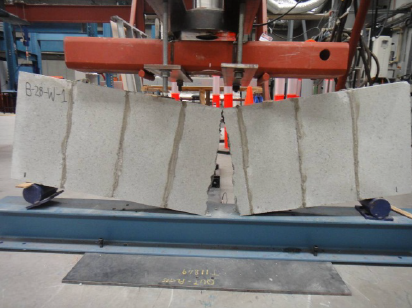1 PhD student, Faculty of Built Environment and Engineering, Queensland University of Technology, julian.thamboo@student.qut.edu.au
2 Professor, Faculty of Built Environment and Engineering, Queensland University of Technology,
m.dhanasekar@qut.edu.au
ABSTRACT
Bond characteristics of masonry are partly affected by the type of mortar used, the techniques of dispersion of mortar and the surface texture of the concrete blocks. Additionally it is understood from the studies on conventional masonry, the bond characteristics are influenced by masonry age and curing methods as well as dryness/dampness at the time of testing. However, all these effects on bond for thin bed masonry containing polymer cement mortar are not well researched. Therefore, the effect of ageing and curing method on bond strength of masonry made with polymer cement mortar was experimentally investigated as part of an ongoing bond strength research program on thin bed concrete masonry at Queensland University of technology. This paper presents the experimental investigation of the flexural and shears bond characteristics of thin bed concrete masonry of varying age/ curing methods. Since, the polymer cement mortar is commonly used in thin bed masonry; bond development through two different curing conditions (dry/wet) was investigated in this research work. The results exhibit that the bond strength increases with the age under the wet and dry curing conditions; dry curing produce stronger bond and is considered as an advantage towards making this form of thin bed masonry better sustainable.
KEYWORDS: thin bed concrete masonry, flexural bond strength, shear bond strength, polymer mortar, age effect, dry curing, wet curing
341.pdf



